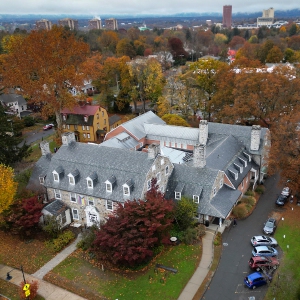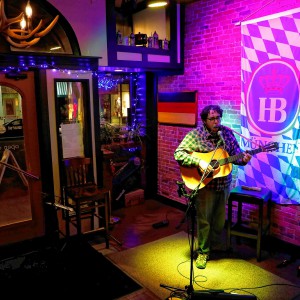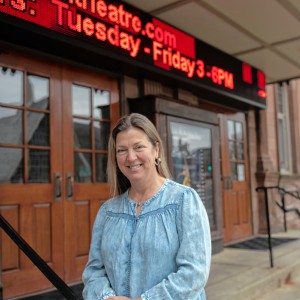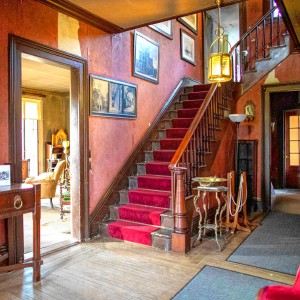Railroad connected region to the world
| Published: 05-30-2023 8:59 AM |
Dwight resident Walter Jenks, 82, remembers the railroad station that once stood down the street from his home, halfway between the Amherst and Belchertown commons.
“The locomotives would come and pick up the milk cans on the platform,” Jenks said of the small depot torn down in the 1940s. “The dairy farmers would set them out to go up to the Amherst Creamery.”
This month marks the 170th anniversary of the opening of Amherst and Belchertown Railroad in 1853 — the communications superhighway of the era that connected the Pioneer Valley with the outside world.
The event put the place where the Jenks family has lived for two centuries, then called Dwight’s Station, on the map. The coming of the railroad also became a creative catalyst for Emily Dickinson.
The year before, in February 1852, Amherst College President Edward Hitchcock traveled to northern Belchertown, a place known as “Log Town.” There were two schools, a tavern nearby, a cemetery, sawmills, a grist mill, a tannery, a wood-turning mill, a wheelwright, a silk mill, a blacksmith shop, a cider mill and a powder mill for making gunpowder.
A brass band, local ministers and immigrant laborers from Ireland came to the railroad’s long-awaited groundbreaking ceremony. Dickinson wrote about the moment in a letter to her brother. She referred to the “Sons of Erin,” and wrote, “Nobody believes it yet, it seems almost like a fairy tale, a most miraculous event in the lives of us all.”
Hitchcock renamed the place “Hopetown,” which appeared in railroad guides, but by 1860, mapmakers had changed it to “Dwight’s Station.” That was after Harrison Dwight, who would become the railroad’s first agent.
He was a grandson of Justus Dwight, one of the area’s first European settlers and whose 1758 powder horn was returned to Belchertown’s Stone House Museum last month.
Article continues after...
Yesterday's Most Read Articles
 Granby Bow and Gun Club says stray bullets that hit homes in Belchertown did not come from its range
Granby Bow and Gun Club says stray bullets that hit homes in Belchertown did not come from its range
 ‘Home away from home’: North Amherst Library officially dedicated, as anonymous donor of $1.7M revealed
‘Home away from home’: North Amherst Library officially dedicated, as anonymous donor of $1.7M revealed
 Super defers Amherst middle school principal pick to successor; one finalist says decision is retaliation for lawsuit
Super defers Amherst middle school principal pick to successor; one finalist says decision is retaliation for lawsuit
 Back to the screen: Amherst authors’ popular ‘Spiderwick Chronicles’ gets a new streaming adaptation
Back to the screen: Amherst authors’ popular ‘Spiderwick Chronicles’ gets a new streaming adaptation
 Annette Pfannebecker: Vote yes for Shores Ness and for Deerfield
Annette Pfannebecker: Vote yes for Shores Ness and for Deerfield
 Sole over-budget bid could doom Jones Library expansion project
Sole over-budget bid could doom Jones Library expansion project
Harrison Dwight made rifles and manufactured Belchertown’s most notable export: horse-driven carriages. He owned the sawmill that would provide fuel for the locomotives.
He also held hundreds of acres of farmland upon which he erected the water tower and the 24-foot-long wooden railroad station, according to the Central Vermont Railway Historical Society. It was the same building Walter Jenks recalled as a boy.
A little more than a year later, on May 10, 1853, Amherst was “thronged with our citizens” and “bells were ringing,” according to the Amherst Express newspaper. Everyone was “eager to see, with their own eyes, the evidence of this new epoch in the business, and social prosperity of our town.”
There was a “royal salute of nineteen guns” — one for each mile of railroad line to Palmer — “fired from the hill back of (Amherst College), from whence an approaching train may be seen some miles distance.” The brick station at Amherst was completed by year’s end.
Two passenger trains began running each way. At Palmer were connections to Worcester, Boston, Springfield and Albany. At New London, Conn., you could get to New Haven and New York City. A ticket to Springfield cost a dollar, equal to about $40 today.
Dickinson’s father was one of the railroad’s primary investors, a business venture that would fail as soon as it began, according to James Smith, in “The Railroads and Trolleys of Amherst, Massachusetts.”
About a month later, on June 9, 1853, a group of passengers arrived in Amherst from New London for a celebration, and Emily wrote:
“The New London day passed off grandly — so all the people said — it was pretty hot and dusty, but nobody cared for that ... Carriages flew like sparks, hither and tither and yon, and they all said t’was fine. I spose it was — I sat in Prof Tyler’s woods and saw the train move off, and then ran home again for fear someone would see me, or ask me how I did.”
She was said to turn more reclusive after the railroad’s arrival, and wrote her poem, “I like to see it lap the Miles,” which, in part, critiqued the new technology.
By 1856, according to The Springfield Republican, Belchertown was booming, with yearly exports of hundreds of carriages, thousands of railroad ties and “100 carloads of ship timber.” Much of the lumber likely came from mills near Dwight’s Station, though the village was known as much for its poverty.
Josiah Gilbert Holland, among the country’s wealthiest authors after Mark Twain, was asked about his birthplace on a farm at Dwight’s Station and was said to quip that he’d like to “buy the thing and burn it to the ground.”
Emily Dickinson’s sister-in-law Susan spent every Sunday at Dwight’s Station in the 1880s. She “often prepared baskets of food for those far less fortunate than the upper-middle-class Dickinsons,” according to Martha Smith in the book “The Cambridge Companion to Emily Dickinson.” Susan began a Sunday school with seven students, efforts that culminated with the construction of the Dwight Chapel in 1887.
That same year, another rail line, the Central Massachusetts branch of the Boston & Maine, was constructed through the village adjacent to the original Amherst-Belchertown tracks. Its flag stop was named Pansy Park for the nearby renowned flower gardens. A post office and grocery store soon opened.
Dwight Station’s heyday was short-lived. Passenger service to both lines ceased about 1931. The Boston & Maine tracks were removed and transformed into today’s popular Norwottuck Branch Rail Trail. The sign announcing the “Dwight Station Mini Mart” on Route 9 was removed a few years ago.
Today, the unincorporated village Dwight, about nine square miles, is known more for its natural beauty than the cemetery and chapel bearing its name.
It sits at the intersection of three brooks that feed Amherst’s Lawrence Swamp. You can join the Metacomet-Monadnock hiking trail there and visit scenic waterfalls, ponds and forest.
Michael Carolan lives in Dwight and teaches writing at Clark University in Worcester. Special thanks to Jerry Bannister, the Stone House Museum in Belchertown and the Jones Library in Amherst.

 A DIY approach to flying: Local pilots build and help build their own aircraft
A DIY approach to flying: Local pilots build and help build their own aircraft You’re up next: Western Mass open mic scene heats up post-pandemic
You’re up next: Western Mass open mic scene heats up post-pandemic One upon a story slam: This year’s Valley Voices winners head to a final competition
One upon a story slam: This year’s Valley Voices winners head to a final competition Preserving a key part of Emily Dickinson’s legacy: Historic Evergreens house reopens at the Emily Dickinson Museum
Preserving a key part of Emily Dickinson’s legacy: Historic Evergreens house reopens at the Emily Dickinson Museum